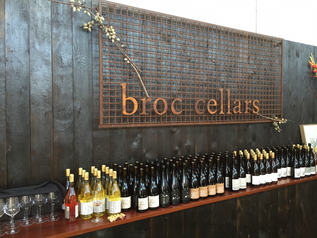|
For the past few months, professional wine journalists and bloggers have been debating the concepts of the "hipster somm" and "natural" winemaking. The debate boils down to this:
1) Apparently younger somms in NYC have started to favor wines made in what they believe to be Old World style: low in alcohol, high in acid, and made by winemakers who swear to zero intervention; 2) These somms even like wines with hints of Brettanomyces, a verifiable wine flaw caused by undesirable yeast strains that make wine smell like wet barn animals (sulfur); 3) The somms favor adherents of "natural" winemaking, which is typically defined by biodynamic farming, not adding excessive (or any) sulfites as preservatives, using only native vineyard yeasts, and not doctoring wine with tartaric acid, sugar, grape concentrate, etc. to make up for a flawed wine. 4) Wine journalists hit back that the form of "natural" winemaking which "hipster somms" favor equates toward asceticism. The strictest form of non-intervention imposed by the hipsters leads to bad wine. Modern methods and New World styles are not inherently wrong. OK. Clear as mud? What I can gather from this ongoing war of words is a lot of over-exaggeration. The desire for authenticity and integrity in wine is nothing new or hip. People who pay a lot of money for fine wines want a pure expression of the grape varietal(s). But so many wines today are clouded in mystery as to their contents. Along with the organic and non-GMO movements, the natural wine movement is rightly seeking clarity about what's in the bottle. However, some purists take it pretty far. Is it defiling or desecrating the wine to add small amounts of tartaric acid to balance out flabbiness? Is using a controlled, cultured yeast instead of native vineyard yeast an abomination? No. The problem is that, unless a vintner details their winemaking process on their website or on the bottle's label, you have no clue how that wine is made. A $5 wine you find on a liquor store shelf is most certainly doctored with sugar, acid, and other additives to make up for cheap quality. But the $15, $20, or even $50 bottle you buy for a special dinner may be just as doctored up, too. The hipster somms may be fanatics, but they're driving the industry to improve their transparency, and through that - each producer's winemaking skills. Wine journalist Monty Waldin does a stellar job in clarifying the debate from a knowledgeable insider's perspective: https://grapecollective.com/articles/monty-waldin-on-hipster-somms-and-why-black-magic-wine-is-delicious-wine
0 Comments
Your comment will be posted after it is approved.
Leave a Reply. |
Blog
Other non-travel ramblings on wine and business. Archives
December 2018
Categories
All
|
|
All content is original property of Vineration unless otherwise noted.
Not permitted for reproduction. © COPYRIGHT 2019. ALL RIGHTS RESERVED.
|


 RSS Feed
RSS Feed

